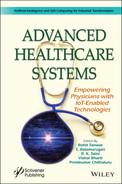17
IoT-Based Automated Healthcare System
Darpan Anand* and Aashish Kumar
Department of CSE, Chandigarh University, Punjab, India
Abstract
In the era of 20th century, the advancement in Internet of Things (IoT) technologies leads to revolutionary development in healthcare. Since there is tremendous growth in the IoT devices which therefore leads to the problem of load balancing, dynamic IP allocation, change in routing, bandwidth management end-to-end reachability, innovation, etc. SDN and NFV solve these problems. SDN decouples the control plane and data plane. But the command line interface and absence of doctors lead to the death of patients in many developing countries. Apart from them, various reports show that around 25% of errors are found in writing medical records. To overcome the various real-life problems as well as network problems SDN-based IoT devices came into the picture. In this paper, we have given an overview of SDN, NFV, and types of sensors used in IoT devices. Apart from it, the various researcher views are also given. We have given an SDN-based IoT device for healthcare architecture and also discuss the challenges.
Keywords: e-Healthcare system, Internet of Things, software defined network, information security
17.1 Introduction
In many countries, health is the primary concern that affects the quality of life. Shaik and Chitre [1] demonstrated that the non-presence of electronic medical services frameworks and over-reliance on paper-based frameworks in numerous essential medical care centers in rustic regions prompted patients to keep their clinical records without anyone else. In a few examples, this has prompted a patient’s passing because of the inaccessibility of a doctor. Additionally, medical attendants in clinics gather indispensable signs information, for example, circulatory strain, temperature, respiratory rate, and also beat rate to screen patient advancement and abnormalities [2]. The attendants commonly record these essential signs readings of patients physically, which is manageable to numerous blunders [3]. As per [4], the worldwide medical services savvy wearable medical care (SWH) gadgets, SDN_Based Secure Healthcare Monitoring System (SDN-SHMS) market, will increment at an accumulated yearly development rate of 5.6% and will arrive at 25 billion by 2020. Managing billions of devices is not easy. This leads to the problem of network complexity, network delay, vendor-specific components, etc. Software-Defined Network and Network Function Virtualization solved the issues. SDN-based Internet of Things (IoT) devices has a large number of advantages such as follows:
- 1) Network management is easy
- 2) Security and privacy is enhanced
- 3) Accessing information from anywhere
- 4) Efficient use of resource utilization
- 5) Energy management
These SDN IoT devices have a great effect on healthcare. SDN IoT architecture is divided into several parts, namely, the data plane layer, core backbone network, SDN controller, and data center network. Apart from benefits, there are a lot of challenges, and SDN IoT devices have to be faced in the healthcare system.
17.1.1 Software-Defined Network
In a traditional network, the network plane and control plane are tightly coupled; this led to the problem of dynamic IP assignment, change in steering, data transfer capacity, the executives start to finish reachability, etc. To solve the above problem, the SDN came into the picture. SDN [5] bifurcates the control plane and information plane. It is currently used in various data centers of big giant companies such as Amazon, Google, Facebook, and also in a 5G network [6]. The architecture is shown in Figure 17.1 [7–9].
Infrastructure Layer: These are the dumb switches and routers and route the packets according to the set of instructions defined in the forwarding table [10].
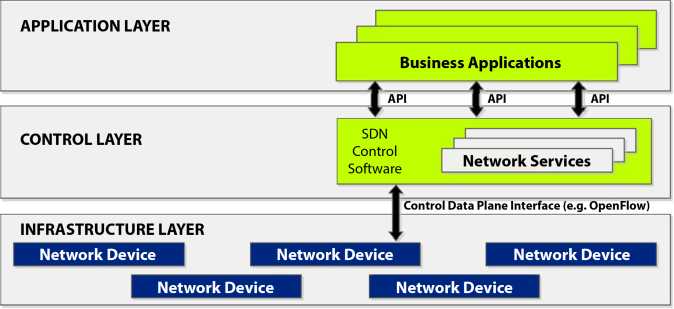
Figure 17.1 SDN architecture.
Control Layer: These are called “brain of the network”. The controller has the global view of the network, so that management and securing the network become easy as compared to traditional network [11].
Management Plane: It is used to access and help in management of our network devices [12]. The correspondence between the foundation layer and control layer is performed by OpenFlow protocol [13]. It is the most normally utilized southward API in the SDN and created, normalized by the Open Flow Networking Foundation (ONF). SDN integrated with IoT devices [14] has many advantages, as discussed in the latter part of this section.
17.1.2 Network Function Virtualization
A conventional organization depends on the idea of “One Node One Service”, which implies that an assistance is sent on explicit equipment. This conventional organization causes versatility, adaptability, speed decrease, delay, and other organization dormancy issues. These issues will be hurtful to the business and the association. Consequently, we need a stage to defeat the previously mentioned issues and it is reasonable to determine NFV issues with virtualization of organization assets. NFV utilizes three systems as virtualization [15], programming [16], and orchestration [17] for network virtualization, as shown in Figure 17.2. NFV is likewise helpful for supplanting costly, devoted, and explicit reason equipment with nonexclusive equipment.

Figure 17.2 NFV architecture.
Now, we will discuss sensor used in IoT devices in details.
17.1.3 Sensor Used in IoT Devices
- 1) Ring sensor: It measures the human heart rate and oxygen concentration, and the other name of ring sensor is pulse oximetry sensor [18], as shown in Figure 17.3.
- 2) ECG sensor: It measures the electrical and macular function of the heart. It continuously measures the heart rate of the human body [19], as shown in Figure 17.4.
- 3) GSR sensor: GSR stands for Galvanic Skin response sensor. It can be used to detect the emotion and stress of human body [20], as shown in Figure 17.5.
- 4) Graphene vapor sensor: It can measure chemical evaporates through skin. It can also detect the diabetes, high blood pressure, anemia [21], as shown in Figure 17.6.
- 5) Health patch sensor: It can detect the chronic disease and fix with chest of the human body and measure the temperature, heart rate, and ECG of the human body [22], as shown in Figure 17.7.
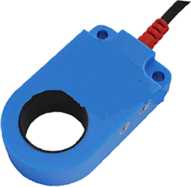
Figure 17.3 Ring sensor.

Figure 17.4 ECG sensor.
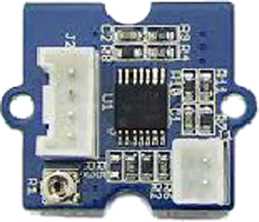
Figure 17.5 GSR sensor.
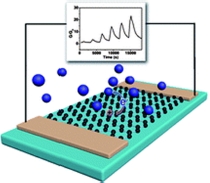
Figure 17.6 Graphene vapor sensor.
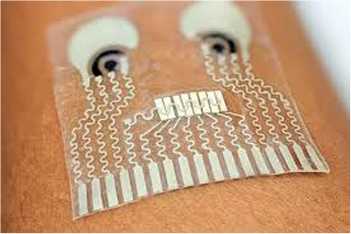
Figure 17.7 Health patch sensor.
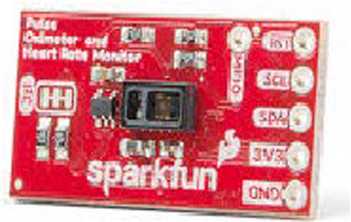
Figure 17.8 Oximeter sensor.
- 6) Oximeter sensor: Oximeter sensor detects amount of oxygen present in the blood (hemoglobin) [23], as shown in Figure 17.8.
- 7) QTM sensor: This sensor detects emotion of the human by response of physiological behavior [24].
- 8) Airflow sensor: It is thin nasal sensor which detects the respiratory rate of the patients by using prongs. It detects the asthma, anxiety, pneumonia, and drug overdose [25].
- 9) Optical biosensor: It detects the continuous signs from the optical creation of biomolecules [26], as shown in Figure 17.9.
- 10) Respiration sensor: It measures the rate of thoracic breathing as well as normal breathing [27], as shown in Figure 17.10.
Till now, we have discussed overview of SDN, NFV, and sensors used in IoT devices. Section 17.2 discusses about SDN-based IoT framework.
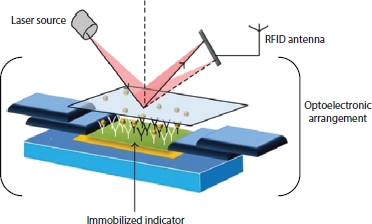
Figure 17.9 Optical biosensor.

Figure 17.10 Respiration sensor.
17.2 SDN-Based IoT Framework
The following discusses the need of the of SDN-IoT framework [28].
- 1) Network Management: In this era, millions of devices are interconnected by the IoT technology; therefore, a large amount of information is generated and needs to be executed efficiently. To solve the above problem, a separate technology is introduced, i.e., SDN. As we have discussed, SDN has a global view of the network and solves the problem of network delay, bandwidth utilization, etc.
- 2) Accessing Information From Anywhere: Since the billions of equipment are joined through IoT technology. So that the equipment can be accessed from anywhere around the world and functionality can be changed according to the user need. This can be achieved by SDN technology.
- 3) Resource Utilization: Overexploitation of resources or underutilization of resources degrades the network performance. To achieve high network performance, the overall view of the entire network should be available. SDN solves the problem.
- 4) Energy Management: IoT devices are battery-operated devices and therefore are power constraint devices. SDN utilizes the resources efficiently and reliably and led to the efficient utilization of power resources to take place.
Figure 17.11 shows software-defined IoT framework. The framework is divided into four parts.
- 1) Data plane layer: It has IoT devices such as ECG machines and pulse oximeter that are connected to SDN switches and routers through Wi-Fi or any other LTE technology. Router may be Juniper MX-Series, PC engines, Pronto 3220/3290, HP curve, etc. Their main aim is to collect the data from the patients.
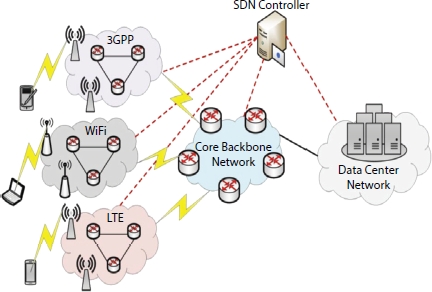
Figure 17.11 A schematic view of software-defined Internet of Things.
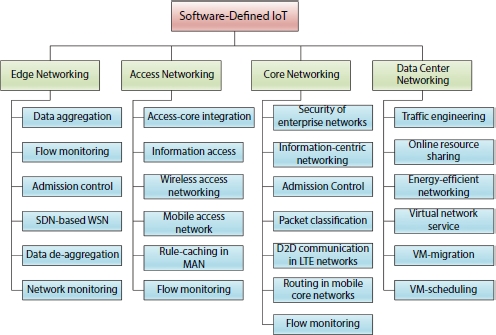
Figure 17.12 Overview of different aspects of SDN-based IoT networks.
- 2) Core Backbone Network: This is internet through which the information collected from sensing devices and transferred to the controller and data center network.
- 3) SDN Controller: It has the global view of the network; therefore, the network management and routing of data can be done efficiently. It can be located at various geographical areas.
- 4) Data Center Network: In this, actual processing of the sensed data takes place and be used for further use.
Figure 17.12 shows the SDN-based IoT networks.
17.3 Literature Survey
The authors in [29] have thought about the test of gathering and totalling and playing out the investigation on the organization information from different IoT gadgets. This crude information can huge information and can happen in any structure like sound, video, and text. For continuous transmission on the hugely huge measure of information, creators have proposed a unified and adaptable framework design that can give the security, protection, and other security fundamentals for different associated medical care applications.
Khayat et. al [30]explain the utilization, experience and benefits of IoT. The subtleties of the planning are furthermore and other segment necessity is additionally represented by them. Creators have proposed engineering on IoT-medical services along with the further different examination headings and difficulties.
In this paper [31], researchers have analyzed the troubles related to weak points and assurance of the standard medical administrations monitoring system (HMS). This plan can be utilized to regulate IoT devices based on clinical benefit checking structures. It guarantees the security and protection; however, the dependability of the different conveyed benefits too. These administrations and strategies are expected for old individuals and patients.
This paper depicts the situation with IoT with various measurements [32]. The nine examination headings specifically enormous scaling, designing and conditions, making data, force, responsiveness, security, assurance, protection, and human on top of it have been examined to give the expanding usage of sensors and actuators [38].
The paper proposed a blend of advancements specifically SDN and IoT [33]. New improvement in different areas like remote for example, remote and optical space along with provocations identified with the two advancements from security and, furthermore, adaptability points of view, are likewise featured to combine the innovation. SDN innovation is not just structure up a focus on industry and the scholarly world yet additionally is the best innovation in diminishing the network with a predefined convention in the innovative space.
SDN from different points of view tackles the issue of productivity, versatility, sensibility, and cost adequacy in IoT [34]. The various plans related to frameworks organization have furthermore been portrayed, which supports the association with SDN [34].
17.4 Architecture of SDN-IoT for Healthcare System
In Figure 17.13, architecture of SDN-IoT–based medical services is outlined. The network is incorporated further with different associations of different crisis facilities. These facilities are moreover connected with different works where data exchange from various IoT contraptions. It might be seen that the network is incorporated further with different associations of different crisis facilities. These facilities are moreover connected with the subnet works, in which data exchange from various IoT contraptions, sufferer data, etc., is cultivated. The server farm at which all the connected information is put away is halfway positioned. The organization utilized at this server farm is additionally included a three-layered engineering. The principal layer is the system’s administration layer in which the organization geographies like physical setup and organizing gadgets (switches and switch) are situated. The layer above the principal layer consists of SDN regulator. Conventional organizations included various system administration gadgets; these gadgets comprise of the insight and the hidden organization framework inside; however, SDN changes the entire thought. The differed organizing gadgets utilized at the foundation layer as referenced before are only the idiotic gadgets that are utilized to convey the traffic from one spot to another. The guidance to them is given by the SDN regulator as it were. The end layer is the client layer where applications such as firewall and intrusion detection are installed. Using these applications in a SDN-based association improves the challenges.
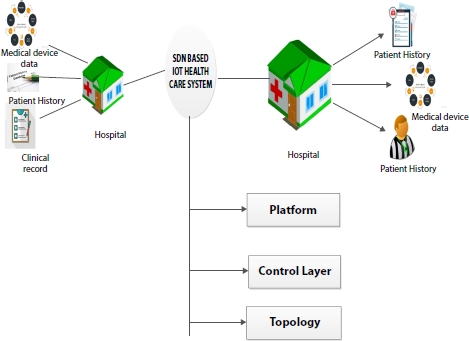
Figure 17.13 Architecture of SDN-IoT for healthcare system.
17.5 Challenges
There are difficulties in IoT in four areas due to hardware challenges, architecture challenges, technical challenges, and safety and security issues. In coordination of alignment, information and understanding of different reference models are researched with the aim of improving compatibility and data in the gadget. In a clear examination, the problems identified with the openness of the mastermind, the long-distance relationships with trusted communities were investigated. Problems identified with the use of control and cost-common sense in gears are described. Means and focused blueprints on safety and security challenges control the issues of low laziness and issues of compatibility on the IoT foundation’s standardized test discussions. Attempts to coordinate specific requirements with terms of use have been included in industry issues [35].
Authors in [36] introduced difficulties like normalization, framework design, interoperability and reconciliation, accessibility and unwavering quality, information stockpiling and handling, adaptability, the board and self-arrangement, execution and QoS, ID and interesting personality, force and energy utilization, security and protection, and natural issues. Every one of these difficulties has been faced alongside the issues identified with specific difficulties with the writing, which has been shrouded in a specific test.
Authors in [37] depicted the challenges as enlisting, correspondence and ID, innovations, appropriated understanding, security, and coursed structures development as an undertaking to arrange these troubles in these spaces. The selecting stage covers the mix of standard articles with the sensors having irrelevant effort and low power utilization. The possibility of inactivity has moreover been inspected. The association among computation and correspondence to diminish the use of IoT contraptions is moreover explained.
Zarca et. al [38] explained the vital difficulties in IoT and SDN are naming the character of the board, interoperability and normalization, data protection, objects thriving and security, affiliation security, information request and encryption, range, and greening of IoT, which have been depicted in [39]. The creators have zeroed in on the superb character of sensors and interoperability; moreover, normalization of sensor contraptions and prosperity attempts from unapproved access clients have been founded on with game plan and the confirmation of the utilization of IoT gadgets at a low speed is portrayed the inconveniences.
Security is one of the applications of CSE [40], while authentication is the one of major security services required for any application [41–44]. The same techniques are very useful and advantageous for society and organizations [45–47]. Some of the major applications of computer science, communications, and distributed computing give better results with high-speed network as of 5G-enabled network [48–54].
17.6 Conclusion
This chapter explains the concept of the IoT for the Healthcare sector. It is very important for this sector due to migration to the Industry 4.0. There are various sensors available to measure the various health parameters such as Health Patch Sensor and Oximeter sensor to measure various important health parameters. The use of these technologies has been seen by all of us in case of COVID-19 pandemic too where the temperature, oxygen level, etc., are also be measured through these devices. Further, there are various devices and systems also be developed to identify the vulnerable patients. It is also good for the critical patients to monitor them on the basis of the real-time health parameters. Therefore, this chapter is very important to know about the IoT concepts used in the sector of healthcare to make it under the flagship of the Industry 4.0, i.e., Healthcare 4.0.
References
1. Shaikh, S. and Chitre, V., Healthcare monitoring system using IoT. 2017 International Conference on Trends in Electronics and Informatics (ICEI), pp. 74–377, 2017.
2. Evans, D., Hodgkinson, B., Berry, J., Vital signs in hospital patients: A systematic review. Ijns, 38, 6, 643–650, 2001.
3. Yang, Z., Kankanhalli, A., Ng, B.-Y., Lim, J.T.Y., Examining the pre-adoption stages of healthcare IT: A case study of vital signs monitoring systems. Inf. Manage., 52, 4, 454–467, 2015.
4. Vikash, M., Gupta, M., Upadhayay, Kumar, S., A survey on wireless body area network: Security technology and its design methodologyissue. 2015 International Conference on Innovations in Information, Embedded and Communication Systems (ICIIECS), pp. 328–337, 2015.
5. Xia, W., Wen, Y., Foh, C.H., Niyato, D., Xie, H., A survey on software-defined networking. IEEE Commun. Surv. Tutorials, 17, 1, 27–51, 2014.
6. Gupta, A. and Jha, R.K., A survey of 5G network: Architecture and emerging technologies. IEEE Access, 3, 1206–1232, 2015.
7. Hu, Z., Wang, M., Yan, X., Yin, Y., Luo, Z., A comprehensive security architecture for SDN, in: 2015 18th International Conference on Intelligence in Next Generation Networks, IEEE, pp. 30–37, 2015, February.
8. Hayes, M., Ng, B., Pekar, A., Seah, W.K., Scalable architecture for SDN traffic classification. IEEE Syst. J., 12, 4, 3203–3214, 2017.
9. Sufiev, H. and Haddad, Y., A dynamic load balancing architecture for SDN, in: 2016 IEEE International Conference on the Science of Electrical Engineering (ICSEE), IEEE, pp. 1–3, 2016, November.
10. Dhamecha, K. and Trivedi, B., Sdn issues-a survey. Int. J. Comput. Appl., 73, 18, pp. 30–35, 2013.
11. Jimenez, Y., Cervello-Pastor, C., Garcia, A.J., On the controller placement for designing a distributed SDN control layer, in: 2014 IFIP Networking Conference, IEEE, pp. 1–9, 2014, June.
12. Wang, Y. and Matta, I., Sdn management layer: Design requirements and future direction, in: 2014 IEEE 22nd International Conference on Network Protocols, IEEE, pp. 555–562, 2014, October.
13. McKeown, N., Anderson, T., Balakrishnan, H., Parulkar, G., Peterson, L., Rexford, J., Turner, J., OpenFlow: enabling innovation in campus networks. ACM SIGCOMM Comput. Commun. Rev., 38, 2, 69–74, 2008.
14. Huh, S., Cho, S., Kim, S., Managing IoT devices using blockchain platform, in: 2017 19 th international conference on advanced communication technology (ICACT), IEEE, pp. 464–467, 2017, February.
15. Chiueh, S.N.T.C. and Brook, S., A survey on virtualization technologies. School of Computing as Rpe report, https://arxiv.org/abs/1701.08971, 142, 2005.
16. Salahuddin, M.A., Al-Fuqaha, A., Guizani, M., Shuaib, K., Sallabi, F., Softwarization of internet of things infrastructure for secure and smart healthcare. arXiv preprint arXiv:1805.11011, https://arxiv.org/abs/1701.08971. 2018.
17. Adler, S. and Hesterman, P., The study of orchestration, vol. 2, WW Norton, New York, NY, 1989.
18. Rhee, S., Yang, B.H., Chang, K., Asada, H.H., The ring sensor: a new ambulatory wearable sensor for twenty-four hour patient monitoring, in: Proceedings of the 20th annual International Conference of the IEEE Engineering in Medicine and Biology Society, 20, 4, 1906–1909, 1998, October.
19. Nemati, E., Deen, M.J., Mondal, T., A wireless wearable ECG sensor for longterm applications. IEEE Commun. Mag., 50, 1, 36-f4, 2012.
20. Bakker, J., Pechenizkiy, M., Sidorova, N., What’s your current stress level? Detection of stress patterns from GSR sensor data, in: 2011 IEEE 11th international conference on data mining workshops, 2011, December, IEEE, pp. 573–580.
21. Bogue, R., Graphene sensors: a review of recent developments. Sens. Rev., Vol. 34 No. 3, pp. 233–238, https://doi.org/10.1108/SR-03-2014-631, 2014.
22. Wu, T., Wu, F., Qiu, C., Redouté, J.M., Yuce, M.R., A Rigid-Flex Wearable Health Monitoring Sensor Patch for IoT-Connected Healthcare Applications. IEEE Internet Things J., 7, 8, 6932–6945, 2020.
23. Fernandez, M., Burns, K., Calhoun, B., George, S., Martin, B., Weaver, C., Evaluation of a new pulse oximeter sensor. Am. J. Crit. Care, 16, 2, 146–152, 2007.
24. Zareie, S., Khosravi, H., Nasiri, A., Dastorani, M., Using Landsat Thematic Mapper (TM) sensor to detect change in land surface temperature in relation to land use change in Yazd, Iran. Solid Earth, 7, 6, 1551–1564, 2016.
25. Zhao, Y., Wang, P., Lv, R., Liu, X., Highly sensitive airflow sensor based on Fabry-Perot interferometer and Vernier effect. J. Lightwave Technol., 34, 23, 5351–5356, 2016.
26. Cross, G.H., Reeves, A.A., Brand, S., Popplewell, J.F., Peel, L.L., Swann, M.J., Freeman, N.J., A new quantitative optical biosensor for protein characterisation. Biosens. Bioelectron., 19, 4, 383–390, 2003.
27. Güder, F., Ainla, A., Redston, J., Mosadegh, B., Glavan, A., Martin, T.J., Whitesides, G.M., Paper-based electrical respiration sensor. Angew. Chem. Int. Ed., 55, 19, 5727–5732, 2016.
28. Salahuddin, M.A., Al-Fuqaha, A., Guizani, M., Shuaib, K., Sallabi, F., Softwarization of internet of things infrastructure for secure and smart healthcare. arXiv preprint arXiv:1805.11011, 2018.
29. Hu, L., Qiu, M., Song, J., Hossain, M.S., Ghoneim, A., Software defined healthcare networks. IEEE Wireless Commun., 22, 6, 67–75, 2015.
30. Khayat, M., Barka, E., Sallabi, F., SDN_Based SecureHealthcare Monitoring System (SDN-SHMS), in: 2019 28th International Conference on Computer Communication and Networks (ICCCN), IEEE, pp. 1–7, 2019, July.
31. Stankovic, J.A., Research directions for the internet of things. IEEE Internet ’Things J., 1, 1, 3–9, 2014.
32. Sood, K., Yu, S., Xiang, Y., Software-defined wireless networking opportunities and challenges for Internet-of-Things: A review. IEEE Internet Things J., 3, 4, 453–463, 2015.
33. Badotra, S. and Panda, S.N., A Review On Software-DefinedNetworking Enabled Iot Cloud Computing. IIUM Eng. J. Commun. Systems (ICIIECS), 20, 2, 105–126, 328–337, 2019.
34. Li, J., Altman, E., Touati, C., A general SDN-based IoT framework with NVF implementation. ZTE Commun., 13, 3, 42–45, 2015.
35. Kim, H. and Feamster, N., Improving network management with software defined networking. IEEE Commun. Mag., 51, 2, 114–119, 2013.
36. Hamed, M., II, ElHalawany, B.M., Fouda, M.M., Eldien, A.S.T., A novel approach for resource utilization and management in SDN, in: 2017 13th International Computer Engineering Conference (ICENCO), IEEE, pp. 337–342, 2017, December.
37. Aujla, G.S. and Kumar, N., SDN-based energy management scheme for sustainability of data centers: An analysis on renewable energy sources and electric vehicles participation. J. Parallel Distrib. Comput., 117, 228–245, 2018.
38. Zarca, A.M., Bernabe, J.B., Trapero, R., Rivera, D., Villalobos, J., Skarmeta, A., Gouvas, P, Security management architecture for NFV/SDN-aware IoT systems. IEEE Internet Things J., 6, 5, 8005–8020, 2019.
39. Chen, S., Xu, H., Liu, D., Hu, B., Wang, H., A vision of IoT: Applications, challenges, and opportunities with chinaperspective. IEEE Internet Things J., 1, 4, 349–359, 2014.
40. Anand, D., Khemchandani, V., Sharma, R.K., Identity-based cryptography techniques and applications (a review), in: 2013 5th International Conference and Computational Intelligence and Communication Networks, IEEE, pp. 343–348, 2013.
41. Anand, D., Singh, M.P., Gupta, M., Application of rule based fuzzy inference system in predicting the quality and quantity of potato crop yield in agra, in: Proceedings of the Third International Conference on Soft Computing for Problem Solving, Springer, pp. 211–223, 2014.
42. Anand, D. and Khemchandani, V., An analytical method to audit Indian e-governance system. Int. J. Electron. Gov. Res. (IJEGR), 13, 3, 18–37, 2017.
43. Anand, D. and Khemchandani, V., Identity and access management systems, in: Security and Privacy of Electronic Healthcare Records: Concepts, paradigms and solutions, p. 61, 2019.
44. Anand, D. and Khemchandani, V., Study of e-governance in india: a survey. Int. J. Electron. Secur. Digit. Forensics, 11, 2, 119–144, 2019.
45. Anand, D. and Khemchandani, V., Unified and integrated authentication and key agreement scheme for e-governance system without verification table. Sâdhanâ, 44, 9, 192, 2019.
46. Anand, D. and Khemchandani, V., Data security and privacy functions in fog computing for healthcare 4.0, in: Fog Data Analytics for IoT Applications, pp. 387–420, Springer, Singapore, 2020.
47. Darpan Anand, V., The challenges for authentication in Indian e-governance system (a survey on Indian administrative staff). Int. J. Control Theor. Appl., 2016.
48. Dubey, S., Anand, D., Sharma, J., Lfsr based block cipher technique for text. Int. J. Comput. Sci. Eng., 6, 2, 53–60, 2018.
49. Gaharana, S. and Anand, D., Dynamic id based remote user authentication in multi server environment using smart cards: a review, in: 2015 International Conference on Computational Intelligence and Communication Networks (CICN), IEEE, pp. 1081–1084, 2015.
50. Gaharana, S. and Anand, D., A new approach for remote user authentication in a multi-server environment based on dynamic-id using smart-card. Int. J. Comput. Netw. Inf. Secur., 8, 10, 45, 2016.
51. Gupta, M., Anand, D., Parmar, G., Gupta, R., A new approach for information security using asymmetric encryption and watermarking technique. Int. J. Comput. Appl., 57, 14, 2012.
52. Heer, S. and Anand, D., An improved hand gesture recognition system based on optimized msvm and sift feature extraction algorithm, tech. rep., EasyChair, 2020.
53. Kabta, N., Karhana, A., Thakur, N., Anand, D. et al., Information security in software-defined network, in: Mobile Radio Communications and 5G Networks, pp. 305–319, Springer, Singapore, 2021.
54. Saxena, S. and Anand, D., A novel digital signature algorithm based on biometric hash. Int. J. Comput. Netw. Inf. Secur., 9, 1, 2017.
- * Corresponding author: [email protected]
